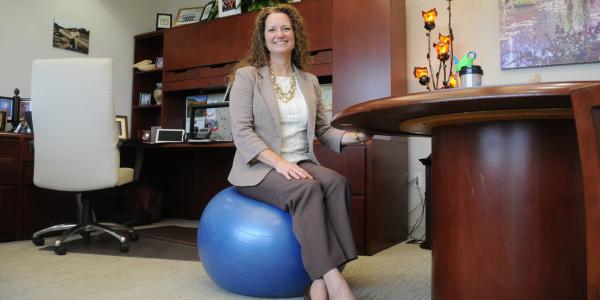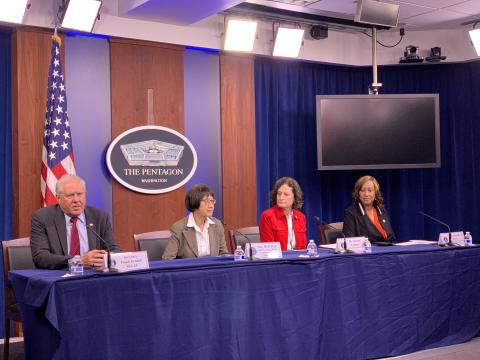Stemming the Shortage of STEM Workers
Employers today face a scarcity of qualified candidates for coveted jobs in science, technology, engineering and mathematics, or STEM—jobs widely regarded as vital to U.S. economic and military strength. One key reason for the lack of skilled workers is gender inequities, which share as much of the blame for the dearth of diversity in these fields.
A shallow pool of candidates exacerbates the problem. Although women make up nearly half the U.S. work force, they constitute just 24 percent of STEM workers, the U.S. Census Bureau reports. Experts offer that this imbalance stems from several causes, ranging from the proverbial glass ceiling to antiquated and damaging stereotypes about women’s math and science abilities, issues of women feeling as if they do not belong, sexual harassment, financial concerns and lack of recognition.
Within academia, women remain in the shadows of their male colleagues. Although women’s representation on faculties in STEM disciplines has improved over time, women still are underrepresented among tenured faculty, according to a 2013 report from the American Association of University Women. This denies students easy access to female mentors and role models. Among STEM faculty members at U.S. colleges and universities, minority women are woefully underrepresented, accounting for less than 2 percent of faculty members even though they hold almost 16 percent of bachelor’s degrees and 7 percent of Ph.D.s in STEM fields, according to the Society of Women Engineers.
Information technology pioneer Linda Gooden says two reasons for the disproportionately small number of minority females come to mind. “From an economic perspective, if you are looking to make a difference and looking to contribute to the household wealth—and you are a well-educated female and African-American or Asian—if you go into industry, you can make considerably more money. A number of women have opted to go into industry instead of teaching for sheer economics,” shares Gooden, who retired in 2013 from Lockheed Martin as executive vice president of its Information Systems and Global Solutions business area. In addition to information technology, Gooden has an extensive background in cybersecurity, operations and finance and worked for about 40 years in the technology field.
“Then, there is the whole area of excitement around the field,” she says. “People have to really feel as though they are making a difference and that they are making a difference in the lives of the students. Many African-American [professors] who are in the engineering fields, for example, feel that they can make a bigger difference and play a bigger role outside of the classroom.”
In May, SIGNAL Media launched an online series exploring the topic of women in STEM, interviewing nearly a dozen successful female professionals. A majority call for early education to boost interest and student participation in the STEM disciplines, particularly among young girls. To diversify the work force and help public- and private-sector organizations better reflect those they serve, leaders say they must color their specialties as creative, relevant and fun. (To read the ongoing series, go to: http://url.afcea.org/WomeninSTEM.)
“Our challenge is to inspire Americans to get into these hard technical fields, to invest the time and effort—and know that it’s going to be hard,” says Maj. Gen. Sandra Finan, USAF, deputy chief information officer (CIO) for command, control, communications and computers (C4) and information infrastructure capabilities at the U.S. Defense Department. “But in the end, you’re going to make the world a better place.
“We need to start attracting people at a very young age, which means we have to invest in mentoring and engagement programs where we get out as early as possible in elementary schools and get youngsters interested in the technology,” Gen. Finan adds. “More and more, we’re not exposing our young children to all of that technology.”
The shortage of trained high-technology workers is punctuated by women who are leaving these critical fields after working so hard to earn their degrees. Reasons for their departure range from family responsibilities to sexual harassment, implicit biases, inhospitable workplaces or limited professional growth opportunities, to name a few. “We naturally find that we have a lot of foreign nationals who are filling these positions, or they are taking the positions back to their countries,” says Natalie Givans, senior vice president at Booz Allen Hamilton. “We do a lot of the outsourcing of [information technology] to other countries, where the labor rates are lower, and there is just [a larger] work force. If we got more women interested, then we would naturally have more of a work force to fill those positions.”
The lack of women to fill slots translates into few mentors for those seeking to blaze workplace trails. Women in STEM must find peers who have similar experience in the field, advises Vice Adm. Nancy Brown, USN (Ret.). “It’s good to have someone as a mentor who has lived in that field, who will help you walk in her shoes. If you’re not in the STEM profession, I think you’re still a good mentor to someone who is trying to stay in STEM, but a role model in your field—it’s definitely something that you need,” she says.
Repeatedly, the issue of a persistent pay gap surfaces. This exists for all working women, not just those in STEM. Women earned 79 percent of what men earned in 2015, according to the U.S. Census Bureau, which based the statistic on the median salaries of all full-time workers. The pay gap is even larger for African-American and Latina women, with African-American women earning 64 cents and Latina women earning 56 cents for every dollar a white, non-Hispanic man earns. However, the pay gap is smaller in technology fields than in the general population and shrinks when salaries of entry-level employees are compared.
President Barack Obama has made STEM education and women in STEM a priority for his administration. The White House’s Office of Science and Technology Policy, in collaboration with the White House Council on Women and Girls, aims to increase the participation of women, girls and other underrepresented minorities in STEM-related fields by boosting engagement in formal and informal environments, encouraging mentoring and supporting efforts to retain women in the STEM work force.
More than 500,000 jobs in information technology sit unfilled across all sectors of the economy, reinforcing “the notion that computer science has become a basic requisite for 21st-century jobs,” according to a White House document on the status of STEM jobs in the United States. Experts forecast that in two years, as many as 2.4 million STEM jobs could be unfilled—which brings the discussion for many back to education.
Landing a job in computers was not too difficult a few decades ago if applicants had the aptitude and were willing to do the hard work to get into the field, Gooden offers.
“Computing was a new area that was exciting and challenging,” she says. “Because we have raised a generation of digital natives, we as an establishment—particularly in the education arena—have to find ways to get back that excitement. Today, the kids take that for granted. Now we have to find ways to show them how to use technology to do things to help make the world truly a better place—in terms of personalized medicine, in terms of making sure food is distributed ... to reduce hunger—and [to] communicate globally more effectively.
“That’s what we have to do in our education system and our employment system so that we can draw more people—women, men, minorities, all people—into the field,” she declares.
Join us for AFCEA's first women's panel. "Why Are Women Leaving STEM?" begins at 1:30 p.m. on August 3 in the Engagement Theater at TechNet Augusta. The conversation continues during a networking reception immediately following the session courtesy of panel sponsors Walker and Associates and Ciena.








Comments